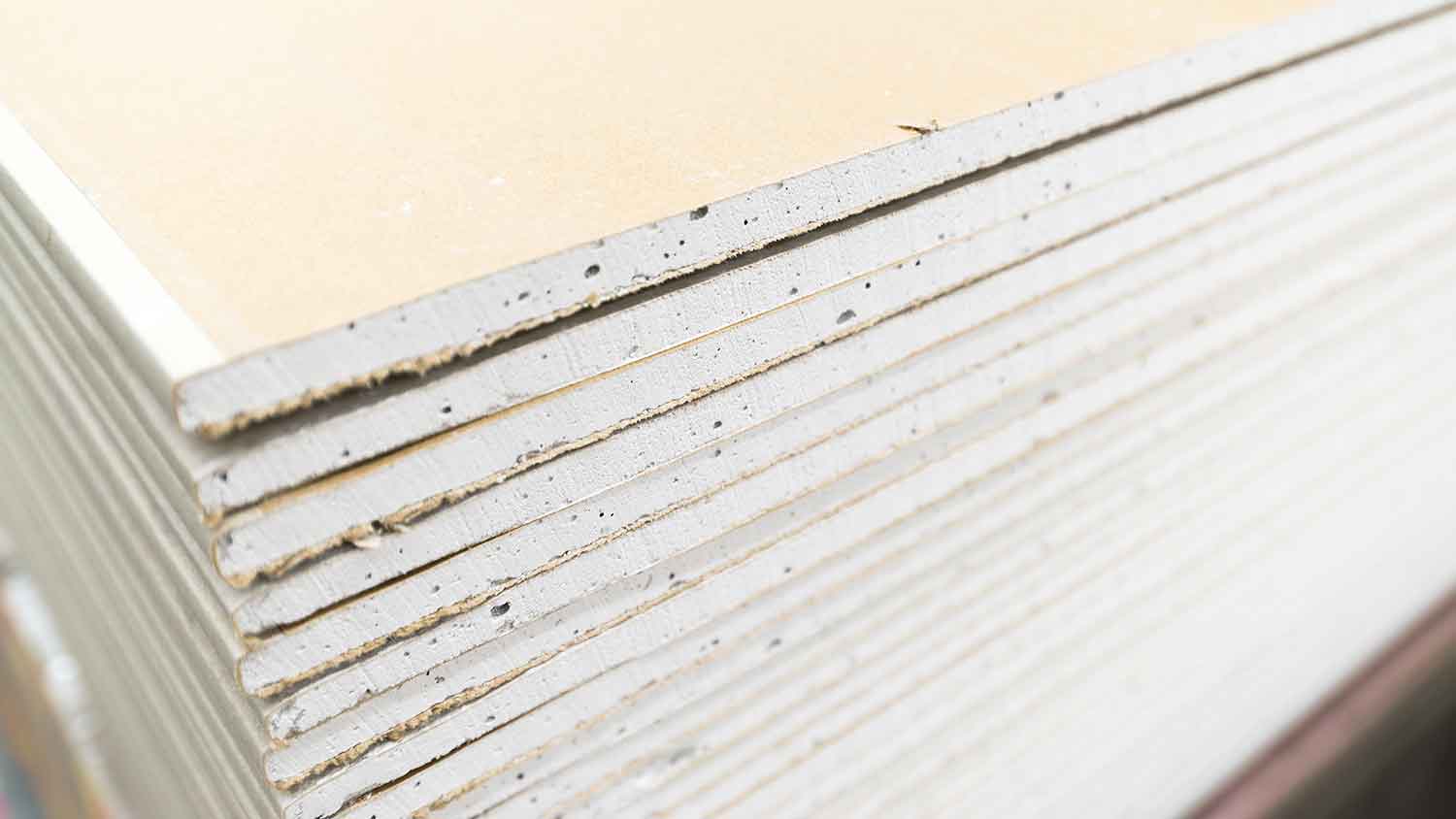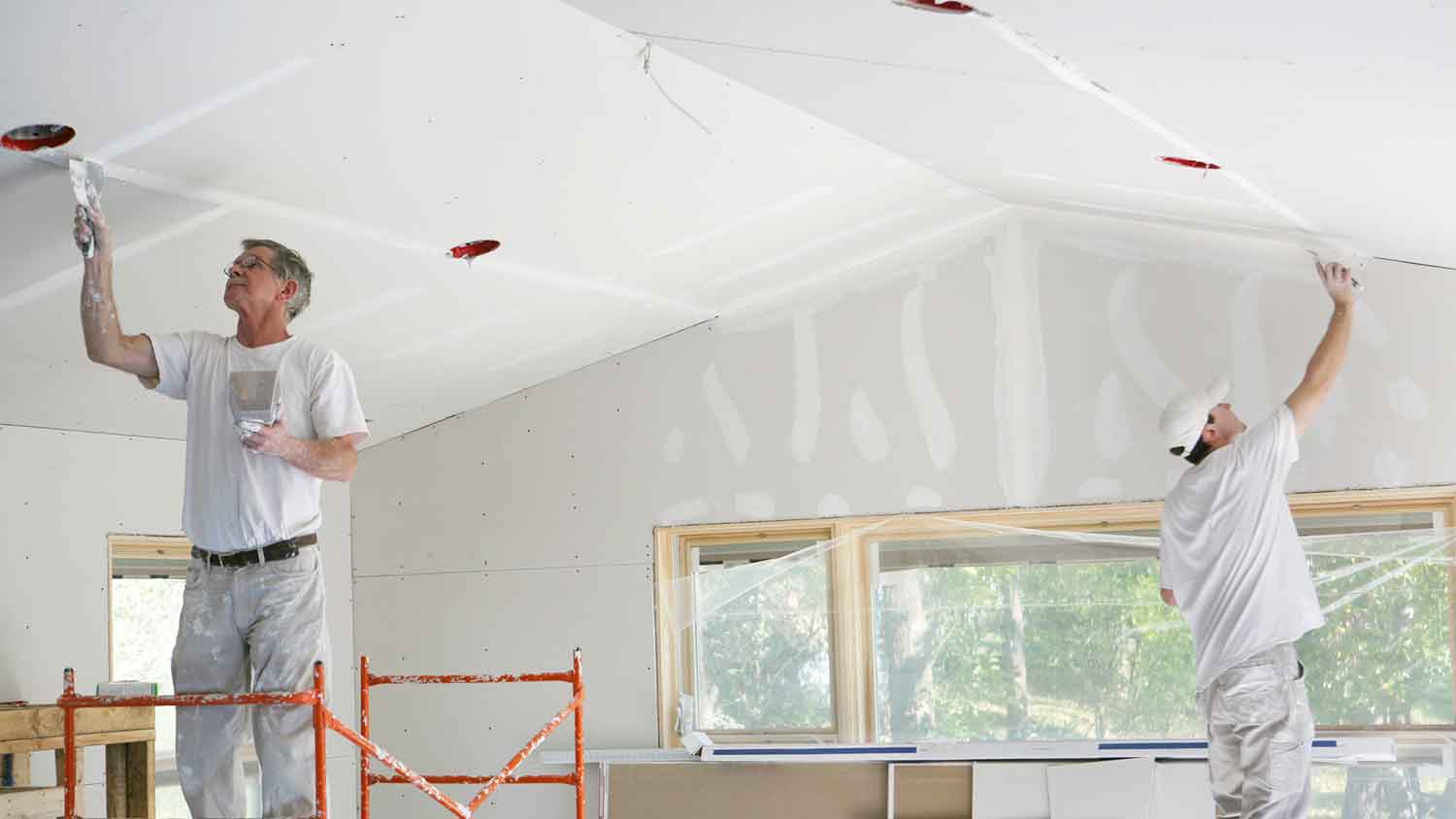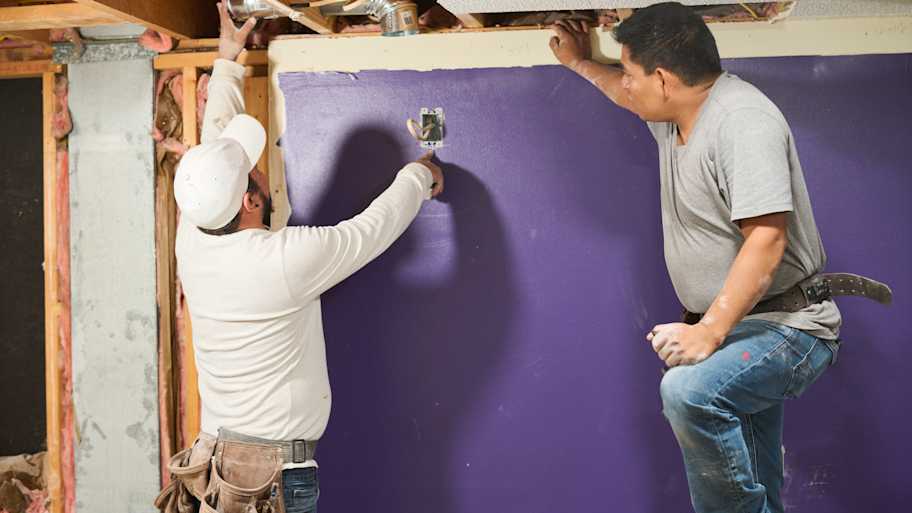Type C vs. Type X Drywall: What’s the Difference?
Fire safety is one of the most important elements when choosing drywall


Type C drywall costs between $1.50 to $3.50 per square foot.
Type X drywall costs less at $1.00 to $3.00 per square foot.
The tradeoff on cost is that Type C drywall is more fire resistant.
In the world of construction and interior design, choosing the right drywall can make all the difference. Type C and Type X drywall are two popular options, each with its own unique properties and applications. In this guide, we'll explore the key differences between the two types of drywall, and help you determine which one best suits your project.
Type C vs Type X Drywall: Key Differences
Type C and Type X drywall are distinct varieties of drywall used in construction. The primary difference lies in their fire resistance. Type C offers improved fire protection with a higher resistance rating, making it suitable for areas requiring enhanced safety, like commercial kitchens or stairwells. In contrast, Type X is less fire-resistant but is still effective in residential applications. Type C's increased thickness and additives make it heavier, requiring proper support. Type X, while lighter, necessitates fire-resistant joint compounds and proper installation for optimum results. The one you use will depend on your project's specific fire safety needs and local building codes.
What is Type C Drywall? Pros and Cons

Type C drywall, also known as fire-resistant drywall, is specially designed to provide superior fire protection. It contains extra fire-resistant additives and is thicker than standard drywall.
| Pros | Cons |
|---|---|
| Enhanced fire resistance | Heavier and thicker |
| Compliance with building codes | Cost |
| Peace of mind |
Best for:
Commercial properties subject to strict fire safety regulations
High-risk fire areas, such as kitchens, garages, and mechanical rooms
Projects where safety and compliance with fire codes are top priorities
Pros of Type C Drywall
If you’re considering Type C drywall for your project, keep these advantages top of mind:
Enhanced fire resistance: Type C drywall offers superior fire protection, making it ideal for areas where safety is paramount, such as commercial kitchens and stairwells.
Compliance with building codes: It meets stringent fire safety regulations, ensuring compliance with local building codes.
Peace of mind: Homeowners and builders will have peace of mind knowing that their property is better protected against fire hazards.
Cons of Type C Drywall
Of course, you also want to take any disadvantages of this drywall into consideration:
Heavier and thicker: Type C drywall is thicker and heavier than standard drywall, which may require additional structural support during installation.
Cost: It tends to be more expensive than regular drywall due to the added fire-resistant properties.
What is Type X Drywall? Pros and Cons

Type X drywall is a drywall variant commonly used in construction. It offers a balance between fire protection and affordability, making it suitable for a range of applications.
| Pros | Cons |
|---|---|
| Versatility | Limited fire protection |
| Cost-effective | Installation requirements |
Best for:
Residential properties seeking a reasonable level of fire protection
Cost-conscious builders and homeowners
Areas where fire safety is important but not subject to extreme fire risks
Pros of Type X Drywall
The advantages of Type X drywall include:
Versatility: It can be used in various interior wall and ceiling applications, making it a versatile choice for builders and homeowners.
Cost-effective: Type X drywall installation is typically less expensive than Type C and other specialty drywall types, making it budget-friendly.
Cons of Type X Drywall
Some disadvantages of Type X drywall you will want to consider are:
Limited fire protection: While it offers fire resistance, it may not provide as high of a level of protection as Type C drywall, so it's not ideal for high-risk areas.
Installation requirements: To maintain its fire-resistant properties, Type X drywall requires proper installation and the use of fire-resistant joint compounds and tape.
Type C vs Type X Drywall
| Type C | Type X |
|---|---|
| Enhanced fire resistance | Limited fire resistance |
| Heavier and thicker | Versatile |
| More expensive | More affordable |
When deciding between Type X vs Type C drywall for your project, think about what your priorities are and which material stands out in that category. Remember—if you’re ever unsure of which type of drywall is the right fit for your home–you can talk with a professional drywall installer to help you decide.
Durability: Type C
Type C drywall holds the upper hand in durability, primarily due to its thicker build and enhanced fire-resistant properties. It is better suited for high-traffic areas and environments where extra protection against wear and tear is necessary.
Price: Type X
Type X drywall is the more budget-friendly option. On average, it may cost between $1.00 to $3.00 per square foot, including materials and installation, while Type C drywall ranges between $1.50 to $3.50 per square foot, including materials and installation–primarily due to its . fire-resistant properties.
Length of Life: Type C
Type C drywall offers a longer lifespan due to its enhanced fire resistance and durability. It is better equipped to withstand the test of time, making it the winner in this aspect. Working with the right drywall contractor can also extend the life of your drywall.
Fire Resistance: Type C
Type C drywall is specifically designed for high fire resistance. It contains additives that enhance its fire-resistant properties, and it is thicker and denser than regular drywall. Type C drywall typically has a 1-hour fire rating and can withstand fire exposure for a longer duration compared to Type X drywall. Type X drywall also provides some level of fire resistance but is not as fire-resistant as Type C. It is designed to offer a 30-minute fire rating, making it suitable for residential applications and areas where a moderate level of fire protection is sufficient.





- Drywall Fire Ratings: Is It All Fire-Resistant? Here’s What to Know
- 5 Types of Drywall and the Use Cases for Each One
- What Is Drywall Made Of?
- Purple Drywall vs. Green Drywall: Pros, Cons, and Costs
- Everything You Need to Know About Drywall Thickness and Size Options
- Who Installs Drywall? Get the Right Pro for the Job
- How to Dispose of Drywall When You’re Done With a DIY
- Lightweight vs. Standard Drywall: Which Is Better?
- When Should You Hire a Pro for Drywall Repair vs. DIY?
- Should You Glue Drywall? Learn the Pros and Cons of Drywall Adhesive










